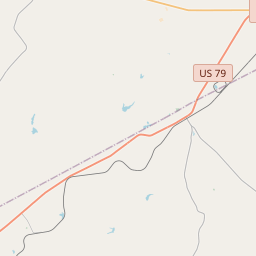Site of Henry High School
Historical marker location:






Despite adverse conditions, African Americans in Texas in the late 19th century worked hard to provide their children with an education. Students in this area attended Mt. Moriah, Boxes Creek, Beulah, Washington Chapel, Union Hope and New Mt. Zion schools. The abbreviated school year allowed the children to help their parents during planting and harvest seasons, and most students focused only on the basics of reading, writing and arithmetic. In the 1930s, Hattie Jamerson, of the Mt. Moriah community, urged local residents to build a high school to serve the rural area's African American students. John Henry Sims, born and educated in Mt. Moriah, returned here in 1932 after earning a teaching certificate in Kansas. Inspired by Jamerson's efforts, he met with Julian P. Greer of the Elkhart Independent School District, and the school board selected a six-acre site here for a school building. Community residents razed the old school buildings and brought the lumber to use in the new construction, which began in 1937.
The school was named for its first principal, George H. Henry, and it opened in January 1938. Students in grades 7-11 met at one end, and the other side housed elementary grades. Students could take basic classes, as well as science, history, homemaking, farming and shop. After Henry retired in 1946, H.J. Hurt served as principal.
In 1939, the first five students graduated from Henry High School, which remained open until 1963, when it merged into Green Bay High School in Tucker. Elementary classes remained until integration with Elkhart schools in 1967. Since 1980, former Henry High students have met biennially to celebrate their educational roots and the community's historic efforts in providing for its children. (2004)
As one of the most visible programs of the Texas Historical Commission (THC), historical markers commemorate diverse topics in Texas history, including: the history and architecture of houses, commercial and public buildings, religious congregations, and military sites; events that changed the course of local and state history; and individuals who have made lasting contributions to the state, community organizations, and businesses.
The city of Austin, the state capital, is known as the live music capital of the world. It is home to many music festivals, including South by Southwest (SXSW) and the Austin City Limits Music Festival.
The county's economy flourished with the arrival of immigrants from the United States and Europe, who established plantations and worked in the timber industry. The town of Palestine, the county seat, developed as a vibrant agricultural center, known for its cotton production. The construction of railroads in the late 19th century further boosted the county's economic growth. However, Anderson County also had its share of challenges.
Like many other areas of Texas, it witnessed tensions and conflicts during the American Civil War, with some residents supporting the Union and others the Confederacy. Reconstruction was a difficult period for the county, as it endured economic decline and political instability.
In the 20th century, Anderson County experienced significant changes and modernization. The discovery of oil reserves in the early 1930s brought economic prosperity to the region. The establishment of the Texas Department of Corrections in the county in 1849 also played a major role in shaping the county's history, as it became home to several state prisons and correctional facilities. Today, Anderson County is known for its diverse economy, including agriculture, manufacturing, and tourism.
The region's rich history is evident in its numerous historic sites and landmarks, making it a fascinating destination for those interested in Texas history and culture.
Anderson County Timeline
This timeline provides a condensed summary of the historical journey of Anderson County, Texas.
- 1836: Anderson County is established on March 24, 1836, as one of the original counties of the Republic of Texas.
- 1838: The town of Palestine is established as the county seat of Anderson County.
- 1861-1865: During the American Civil War, the county's economy is severely affected, and many locals serve in the Confederate Army.
- Late 1800s: The arrival of the railroad in Palestine brings growth and development to Anderson County, making it an important transportation hub.
- Early 1900s: The discovery of oil in the area leads to an economic boom, with various oil fields and refineries being established.
- 1930-1940: The Great Depression and the drought of the 1930s bring significant challenges to Anderson County, leading to decreased economic activity and population decrease.
- Late 20th century: Anderson County experiences shifts in its economy with the decline of the oil industry. Agriculture becomes an important sector, with the county known for its timber, poultry, and cattle production.
- 2000s: Anderson County continues to strive for economic growth and development, focusing on diversified industries, including manufacturing, retail, and healthcare.